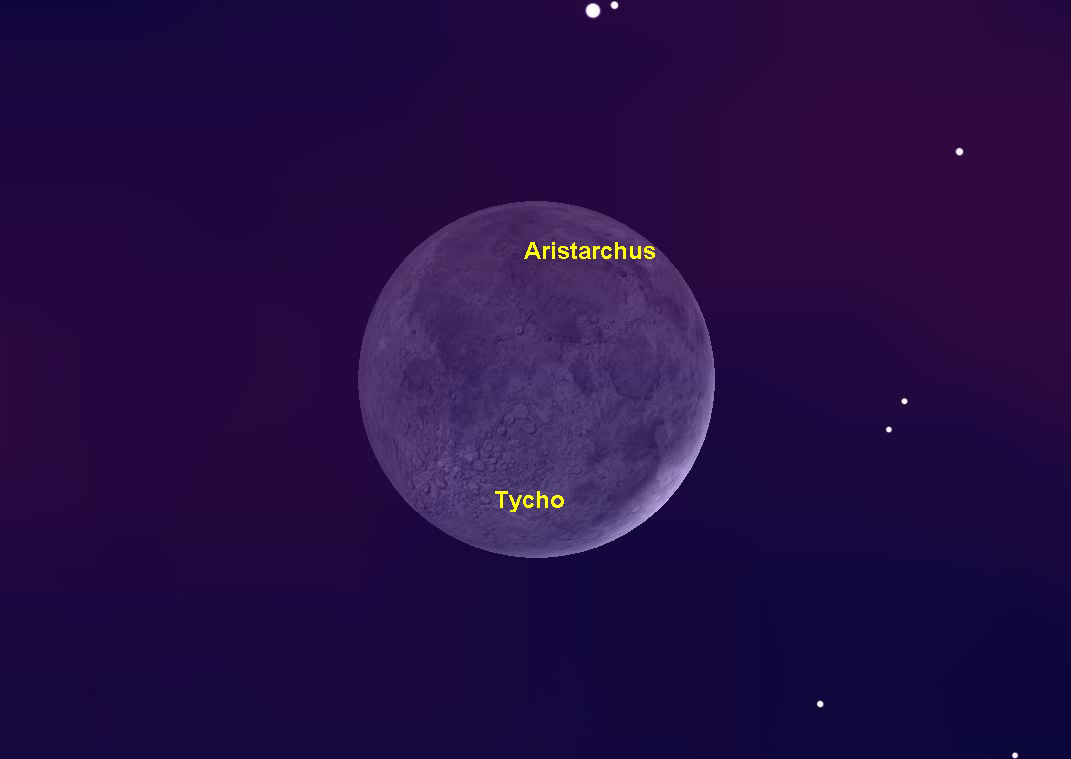Look Up! How to See the Moon's 'Dark Side' Tonight

Skywatchers, take note: Tonight (May 23) and tomorrow night will offer excellent opportunities to observe the so-called "dark side" of the moon.
The new moon occurred on Sunday evening (May 20), marked by an annular eclipse of the sun as the moon passed in front of it. The moon has now moved to the east of the sun, but is still mostly lit from behind. Only a slim crescent on the moon's east side is in full sunlight.
A word about east and west in the sky: When astronomers describe objects in the sky, they use "west" to mean "toward the western horizon" and "east" to mean "toward the eastern horizon." This puts east and west opposite to what we're used to on Earth maps. Just think of us as being on the inside of the sky map looking outward. However when astronomers talk about directions on the surface of a planet or moon, they use east and west exactly the way we do on Earth.
If you look at the crescent moon closely, especially with binoculars or a small telescope, you will probably see a faint outline of the full globe of the moon. This ghostly moon is lit by light reflected from the nearly full Earth in the moon's sky. [Earth's Moon Phases Explained (Infographic)]
This effect of "earthlight" or "earthshine" is sometimes described as seeing the old moon in the new moon's arms.
With binoculars or a telescope, it's easy to pick out the brighter features we are familiar with from the full moon. Remember that the moon always keeps the same face toward the Earth as it orbits our planet. Two craters in particular stand out: Aristarchus in the northwestern quadrant of the moon and Tycho near the moon's south pole.
Many people are confused by the fact that the young moon often seems to be lit from below. Since the sun, the main source of light on the moon, is usually below our horizon when we view the moon up in the sky at night, it should come as no surprise that the moon appears lit from below.
Get the Space.com Newsletter
Breaking space news, the latest updates on rocket launches, skywatching events and more!
What is unusual is to see the moon lit directly from the left or right side: That's something you usually see only in textbooks, never in the real sky. The only time direct sidelight is possible is when we view the moon in full daylight, when the sun is at the same altitude as the moon.
When observing the dark side of the moon, keep your eyes peeled for tiny flashes of light: lunar meteors. It's very rare for a meteor to kick up enough light when hitting the moon's surface to be visible from Earth, but it has happened, and has been confirmed by photographs from different locations, usually during the Leonid meteor shower.
Editor's note: If you snap an amazing picture of the moon that you'd like to be considered for use in a story or gallery, please send images and comments to SPACE.com managing editor Tariq Malik at tmalik@space.com.
This article was provided to SPACE.com by Starry Night Education, the leader in space science curriculum solutions. Follow Starry Night on Twitter @StarryNightEdu.
Join our Space Forums to keep talking space on the latest missions, night sky and more! And if you have a news tip, correction or comment, let us know at: community@space.com.

Geoff Gaherty was Space.com's Night Sky columnist and in partnership with Starry Night software and a dedicated amateur astronomer who sought to share the wonders of the night sky with the world. Based in Canada, Geoff studied mathematics and physics at McGill University and earned a Ph.D. in anthropology from the University of Toronto, all while pursuing a passion for the night sky and serving as an astronomy communicator. He credited a partial solar eclipse observed in 1946 (at age 5) and his 1957 sighting of the Comet Arend-Roland as a teenager for sparking his interest in amateur astronomy. In 2008, Geoff won the Chant Medal from the Royal Astronomical Society of Canada, an award given to a Canadian amateur astronomer in recognition of their lifetime achievements. Sadly, Geoff passed away July 7, 2016 due to complications from a kidney transplant, but his legacy continues at Starry Night.










